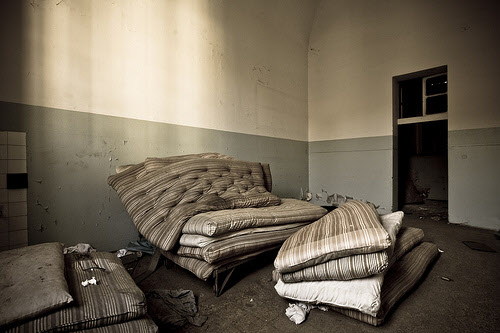People are dumping old mattresses into landfills at an alarming rate across the country. The International Sleep Products Association (ISPA) estimates that Americans get rid of approximately 17 million mattresses every year!
Mattresses are thrown out for a variety of reasons — they get old, they get lumpy, the kids have jumped on them too much. There are health reasons, too — the mattress might get infested with bugs, or infected with germs.
So what do most people do? They might drive to a local recycling dumpster and toss the bed in, without giving a second thought. And then what? The town or city recycling center is then burdened with the effort of disposing the old mattress.
People should be able to recycle their mattresses; in light of this, some states have begun to adopt mattress recycling laws, including Connecticut, Rhode Island and California, with others expected to soon follow.
Rhode Island
On June 21, the Rhode Island Senate passed mattress recycling legislation. The unanimous vote will set up the necessary structure for a non-profit group to eventually collect a user fee for mattress recycling. The legislation also makes clear that government involvement in the program should be limited. The bill was endorsed by the ISPA, the mattress industry group. The group had earlier opposed the legislation but is now taking responsibility for its actions in the industry.
The program will receive funding through an as-yet-undetermined fee, paid by consumers when they buy their mattresses. Clearly, this is a good first effort to bring together bed and mattress manufacturers and retailers in the interests of the environment. The measures will help to collect and properly dismantle old mattresses and box springs; 95 percent of these materials are recyclable.
California
At the end of May, California’s State Senate passed SB 254 to create a used mattress recycling program to lower costs for consumers who recycle beds and help reduce the frequency of illegally dumped mattresses. Already, consumer groups like CA 4 Mattress Recycling are helping to usher in a new mattress recycling era in California.
The ISPA noted that the California law gives the state’s residents an opportunity to have a customer-friendly and efficient mattress recycling program. Like the state’s paint recycling and oil recycling programs, a nominal fee will be collected in conjunction with mattresses as well.
Connecticut
Connecticut was the first state in the nation to pass comprehensive mattress recycling legislation. A nonprofit will be formed by mattress manufacturers with the law assessing a fee when mattresses are purchased. Bed retailers will then transfer the collected fees to the nonprofit in order to pay for transportation and recycling of the unwanted mattresses.
Recycling Parts
While these state laws are a step in the right direction, many people have been recycling their own beds for years. It takes time and effort, but most bed components are recyclable. Mattresses and box springs are made of wood, steel, foam and cotton. Wood can be recycled for firewood, mulch (if it’s untreated) or carved into other wood pieces. Steel can be recycled or sold to steel dealers for reuse. Foam and cotton are recyclable on their own merits as well. The trouble with recycling your own bed is you need space to do it (not everyone wants to cut up a bed in their bedroom) and there’s always the possibility of finding things inside the bed you’d rather not.
But if you choose to recycle your mattress, follow these tips below:
Give a mattress: If your bed is in good shape overall, you might find a neighbor or friend who is looking for a spare bed.
Donate your mattress: Charities, churches and similar organizations that offer help to less fortunate often take in donated beds. Also consider homeless shelters, women’s refuge homes and others. Most will require the bed to be in gently used or good condition. Bed frames can be sold or given to thrift shops. Perhaps try looking into local salvage outfits or donating or selling metal or wooden frames to a used furniture store.
Bring it back to the retailer: If you live near the store where you bought your bed a half-decade or so ago, try to return it to the retail store. Some bed stores have a return program. It may even be free with your bed purchase.
Break it down: You can break apart a bed into separate parts for recycling. Safely cut it into separate parts in a large, well-ventilated area. Then, figure out the correct processing center for recycled bulk items in your city or town. Maybe your local waste authority has information on what you need to do with your recycled bed parts.
In a nutshell, bed and mattress recycling efforts look to grow across the US in the coming years, as more consumer groups and state officials see the wisdom in less clutter from mattresses in our national landfills.
Image credit: Funky64 (www.lucarossato.com) via photopin cc

